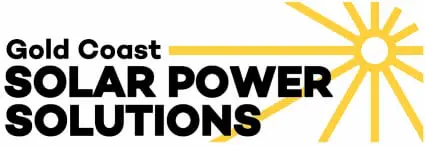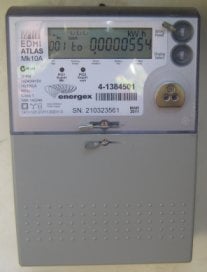At Gold Coast Solar Power Solutions we have been receiving a few enquiries lately from customers who have 3 phase power at their property and they’ve been told that they require a 3 phase solar inverter to suit this.
Do You Need A 3 Phase Solar Inverter?
The answer to this question really comes down to your unique situation. 3 Phase solar inverters do have some benefits but they also come at a higher cost compared to single phase solar inverters. Due to the higher cost you really want to make sure that it’s worth it!
What Are The Benefits Of 3 Phase Inverters?
The main benefits of 3 phase solar inverters is that they convert the solar power to AC power which is fed evenly into the property over all 3 phases. For example, a 5 kW single phase solar inverter working at maximum capacity would be feeding 5kW of solar power into one phase but a three phase 5kW solar inverter in the same situation would feed the power evenly into the 3 phases. 5 kW divided by 3 phases = 1.7 kW; that’s 1.7 kW of power feeding into each phase.
This is very important with larger (6 kW and greater) solar inverter systems as if all the power is feeding down one phase it may well be too much load on the single phase and create an unbalance between the loading of the phases. For solar power systems with inverters of 5kW capacity or less this generally isn’t an issue because 5 kW of power feeding down 1 phase is not usually a problem. I say not usually a problem as in some situations smaller solar power systems between 3 to 5 kW will require a 3 phase solar inverter be installed.
3 Phase Power & Solar Power Self Consumption
We’re often asked about how solar self consumption works with 3 phase power and single phase solar inverters, this question and answer is worth a whole page! For the answer please check out the following article: 3 phase power and solar feed in tariffs – Do I need a 3 phase solar inverter?
When Would You Need a 3 – 5 kW 3 Phase Solar Inverter?
As mentioned above the main benefit of a 3 phase solar inverter is that it feeds power into your property over all 3 phases. There are situations where a single phase 3 – 5kW inverter will just not work; or more likely it will work fine in low light conditions but will come up with a fault in perfect conditions! There’s nothing more annoying than having a solar power system producing nothing at all at a time when it should be producing at its best! When this happens it’s due to resistance in the main power cables on the property. Let’s look at why this resistance can be a problem.
How A Grid Connect Inverter Feeds Power
A grid connect solar power inverter takes the DC solar power from your roof, converts it into AC power as efficiently as possible and then feeds it into your property’s switchboard. This power is then used to power your property with any surplus power being sent back to the grid. In simple terms the inverter “pushes” its power into the power cables on your property and the more power it has to push in the more force is required to do the pushing.
Consider a water pipe. If you only need a small amount of water to flow through the pipe then you don’t need to apply much pressure at all, but if you want to get a lot of water through that same pipe it needs to be forced in under pressure. It’s similar with a solar inverter, if it needs to feed a lot of power into small cables or if the cables span a long distance there will be a lot of resistance in the cables and to overcome this resistance the inverter will apply more pressure to feed the power in and it does this by raising the AC voltage. All grid connect inverters are constantly monitoring the AC voltage and if it goes too high they will automatically shut down to keep the system within the electricity distributors operating parameters. If the cables are too small for the length the power needs to be pushed this problem is going to happen and it’s going to be happen when the system should be working at it’s best – in the middle of a nice sunny day.
As you can imagine with smaller mains cables and long cable runs back to the street this can be a real issue, and this is the perfect situation for a 3 phase solar inverter to be used. Compared to a single phase inverter the 3 phase solar inverter will cut the amount of power being pushed into each phase by a third; which effectively means the 3 phase inverter isn’t having to push anywhere near as hard as a single phase inverter of the same capacity. If the inverter isn’t having to pushing as hard the voltage will not be raised to the point it causes the inverter to cut out. This really is only an issue for 3 – 5 kW systems when the solar power system is installed a long way from the power lines on the street and / or the AC power cables from the inverter back to the street power lines are too small, but with larger systems it’s obviously even more important.
If your solar power system is on a rural property at a distance from the street power lines we recommend a site inspection to ascertain whether your property will suit a single phase or 3 phase solar inverter. By checking the size of your cables and the distances involved we can calculate the expected voltage rise and efficiency of a system at your property to ensure the correct system is designed to meet your requirements.
In Conclusion..
A 3-5 kW 3 phase solar inverter is normally only required on rural properties where the solar power system is installed a long way from the street power lines. This is because the inverter could possibly have to raise the voltage above its preset limits to “push” the power it’s generating back to the street. Whether this is required can be quickly ascertained through a site inspection by the solar power experts at Gold Coast Solar Power Solutions. Another question we are often asked is about how single phase solar works with maximising self consumption when you have 3 phase. For the answer please checkout the following post: 3 phase power and solar feed in tariffs – Do I need a 3 phase solar inverter?
Got A Question About Solar Power? Click Here For Answers!
- Does the temperature affect how much power solar panels make?
- Mono or Polycrystalline solar panels – does it matter?
- Solar Power Production on the Gold Coast – What can I expect?
- Solar Panel Efficiency – Does it matter?
- Solar Panels are different – Does it matter which solar panel?
- Solar Panel diodes – what are they and what do they do?






Hi Simon, I’m exporting 19 kWh per day (on average) from my PV system and purchasing 14 kWh per day from the grid while self consuming only 4 kWh per day. Why am I exporting so much and self consuming so little? Why do I need to purchase 14 kWh per day when I’m producing 23 kWh per day? Is it because 2 of my phases are always importing power and solar power is never used for two thirds of my energy needs? How do I ensure that solar power is used (self consumed) on all 3 phases?
Hi Richard, to install a 3 phase solar inverter you need to have a 3 phase supply from the street.
hello, Ive got a single phase on a main switch can i install a three phase inverter on it?